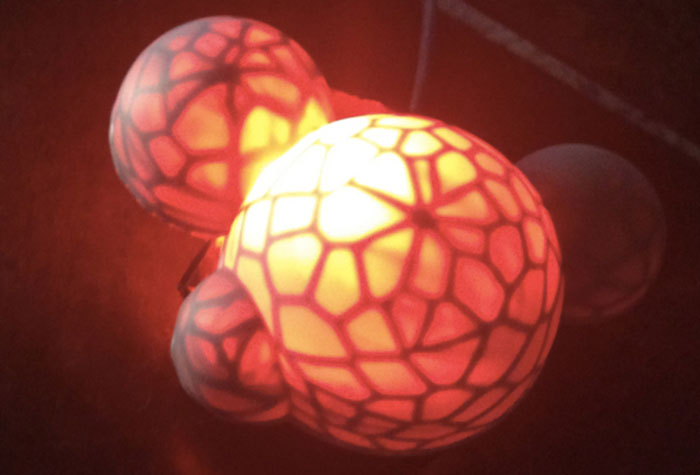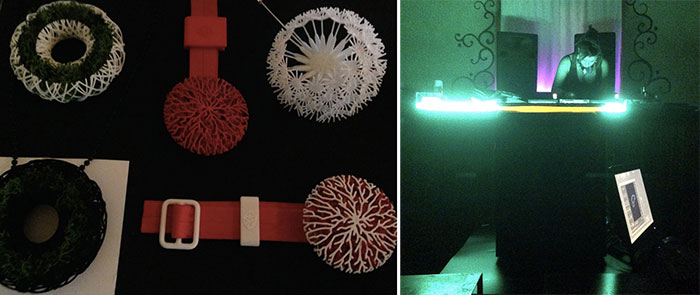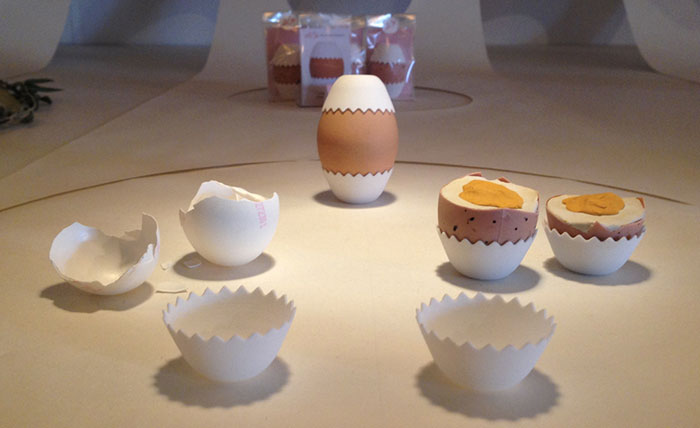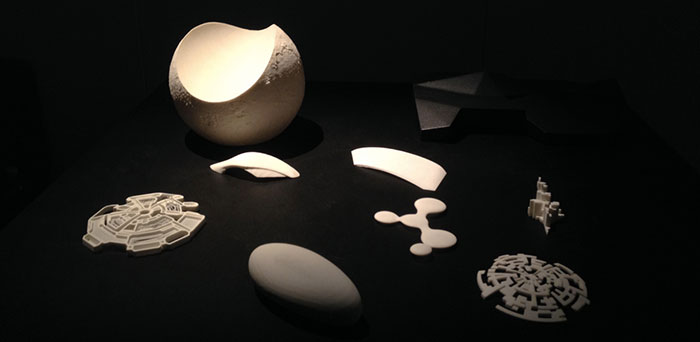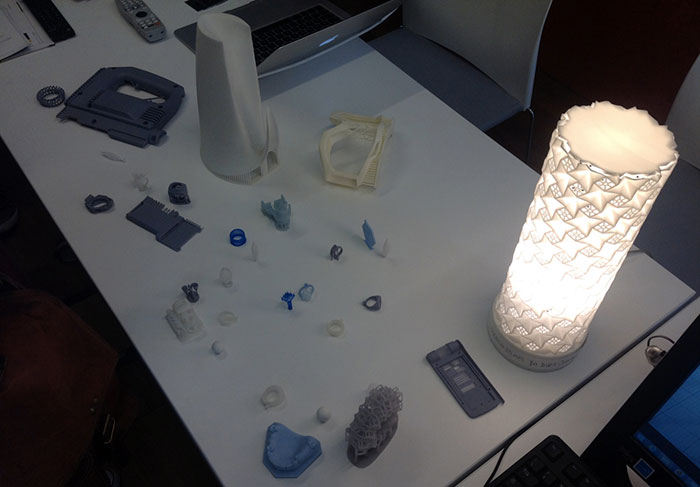Milan Design Week, the week long celebration taking place in the Northern Italian city alongside the Salone del Mobile, is the best place for emerging designers to show their work. Compared with the huge stands and giant budgets necessary to exhibit inside the fair, the “Fuorisalone” events offer a more casual, relaxed and fun atmosphere to enjoy new designs while having a snack, sipping a cocktail or just partying out.
This year, more than ever before, 3D printing played a big part in many of the Fuorisalone exhibits. More affordable machines and 3D printing services allow young designers with limited means to give a physical shape to their creations without investing a fortune. It is still not – by any means – the predominant means of production and neither is it a guarantee of success in the eyes of the highly critical design community.
However, it does drive a lot of excitement among those designers who have already begun to apply it to their work, both final pieces and prototypes, and, more and more, it is becoming a viable – if not a necessary – option to consider. One thing is for sure: this is probably the last design week where the use of 3D printing technologies will be news-material in and of itself. I believe that next year, to get visibility it will be necessary to employ 3D printing in a much more specific and targeted manner.
To better explore this concept, here are some of the most interesting 3D printed designs I saw during my short trips through the city-based exhibits. I must admit I will not be entirely neutral as this year I also organized a Fuorisalone event/exhibit to present the possibilities that many different 3D printing technologies can offer designers, starting from the ability to autonomously go from idea to finished object, in one single, complete, creative cycle.
So the first item to be mentioned here was exhibited during my Dario Marinoni’s event, Dario is also my business partner. It is called “Synthesis”, a luminous object that – as far as we know – enjoys its status of world’s first design created in real time – from idea to physical form – during an exhibit (or at least the first to be advertised in such a way). Growthobjects, a team of designers in Barcelona that has been pushing the limits of many different 3D printing technologies since 2007, thought of it, designed it and 3D printed it during Design Week. In fact the actual printing – with a prototype XFab SLA 3D Printer supplied by DWS – took place on Friday night, in the club that was hosting the Synthesis exhibit, with the machine set up right in front of the DJ console, such that the music was pumping and people were dancing all around it.
During Synthesis, Growthobjects exhibited most of their work but they also had a few pieces made just for this event, using some of the newest 3D printing technologies. One interesting one was the new 
That, however, is also one of the biggest current limits of 3D printing in the world of design: those who are not familiar with materials and technologies cannot always fully appreciate the complexity they can offer.
From a certain point of view Eli5e Luttik’s 3D printed work proved that simplicity and neatness of design can go a long way in assuring a commercial appeal. We spoke a few weeks ago about her work – which has been featured by iMaterialise and is available through Shapeways and even Amazon, but seeing it in real life fully conveys her product’s attractiveness. They – like the egg holder above – are simple, useful, creative concepts that are 3D printed, in ceramics or by laser sintering, and finished to look like mass market, and yet unique, goods.
Another aspect that can be surprising is the extensive use of 3D printing that certain design studios already make and that had never been publicized before. This is the case of T-Sculpt, a Trieste based company that uses 3D printing mostly for prototypes. And not just any 3D printing: they own three EOS machines, including an EOSINT M280 DMLS, which they use to prototype furniture based on intricate designs, integrating systems for heating and cooling. When visiting their stand we saw the 3D printed models and asked about them: they were so excited that someone was actually interested in the rapid prototyping aspect rather than just the final designs: apparently it is not something that happens very often.
Even some established designers are starting to take 3D printing really seriously and explore the possibilities it affords them to let their imagination roam free. One such example is the Cartabianca Lamp by Scilla Andrioli Stuart. “Carta bianca”, in Italian, means “white paper” and is an expression used to indicate full creative liberty. “I was given ‘white paper’ to design this lamp”, Scilla told me, “and I tried to create something that would remind people of a delicate origami, using 3D printing to make it solid.”
One of the most interesting applications of 3D printing in design that I saw was the Design in the Dark project by a team led by Maximiliano Romero, director of the Physical Computing Laboratory of Milan’s Politecnico. He and his team developed an exhibit where designs were created through touch and vocal instructions by 4 blind people. What emerged was objects that may not seem beautiful to the eyes but that are extremely useful in their application: Sensor equipped goggles, braille dice or supports to help direct the knife while cutting.
3D printing may not be ready to take over the entire world of design yet, but it is already making a big difference in the lives of many.


